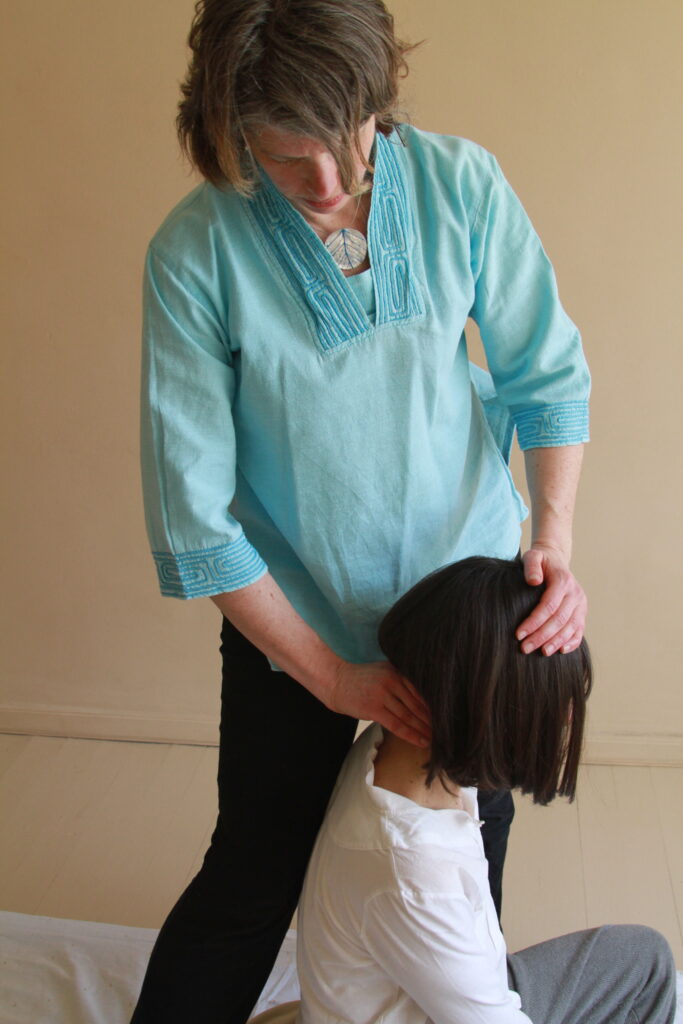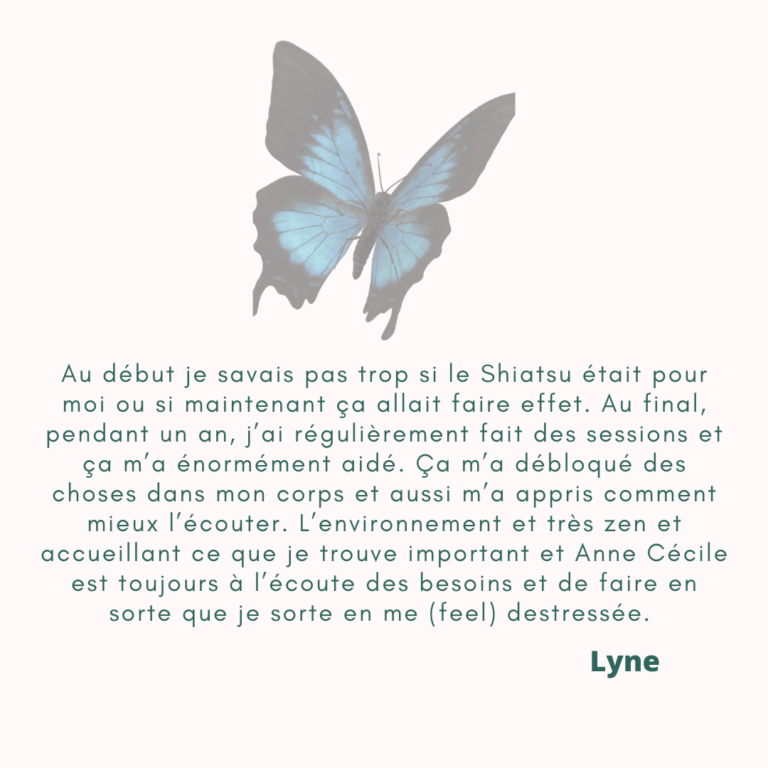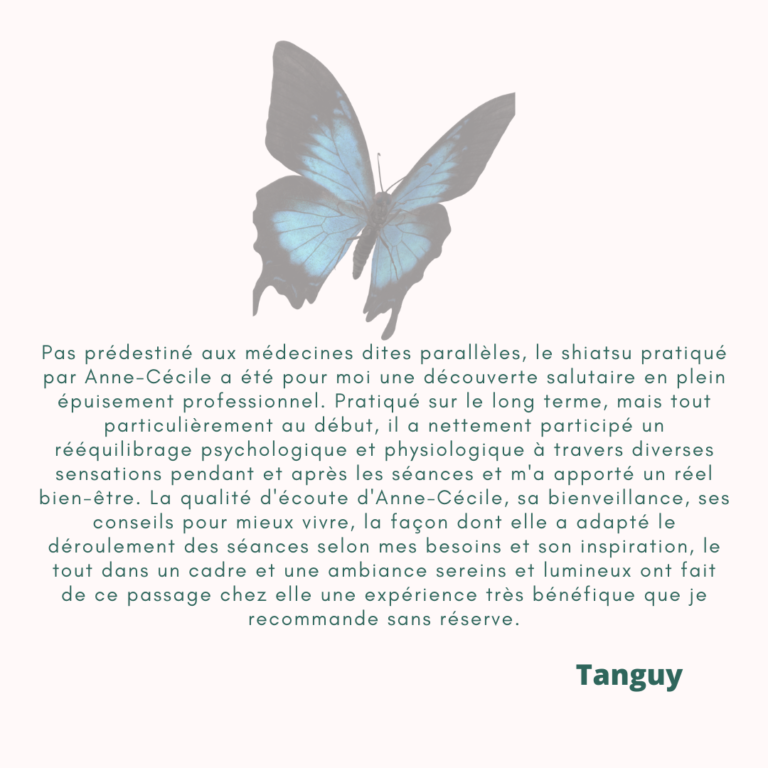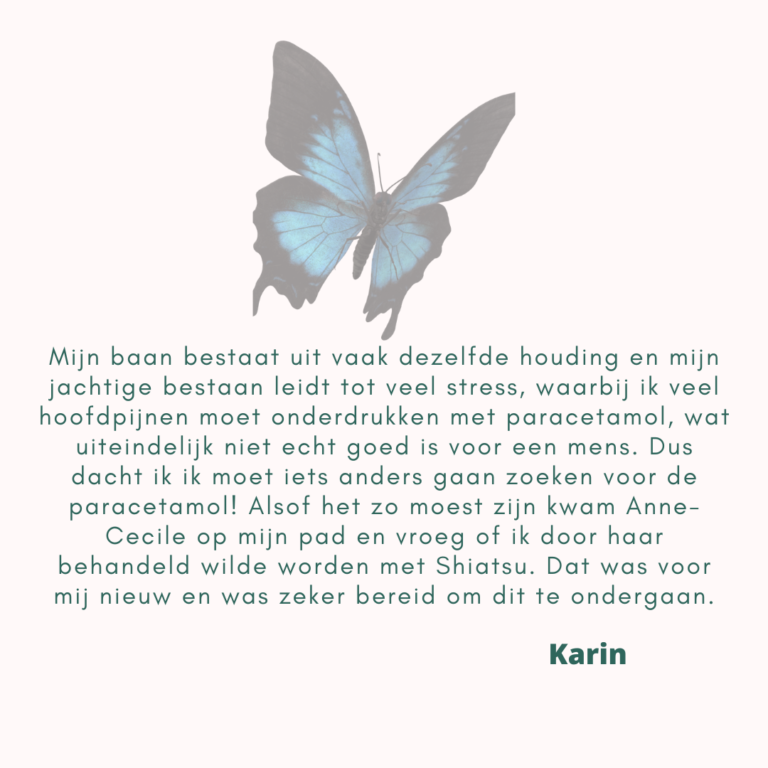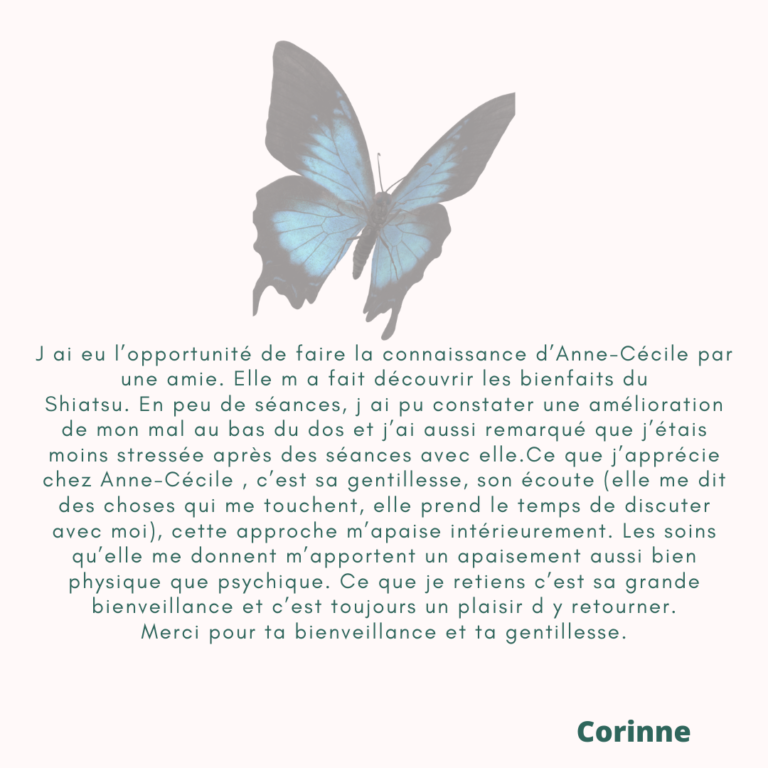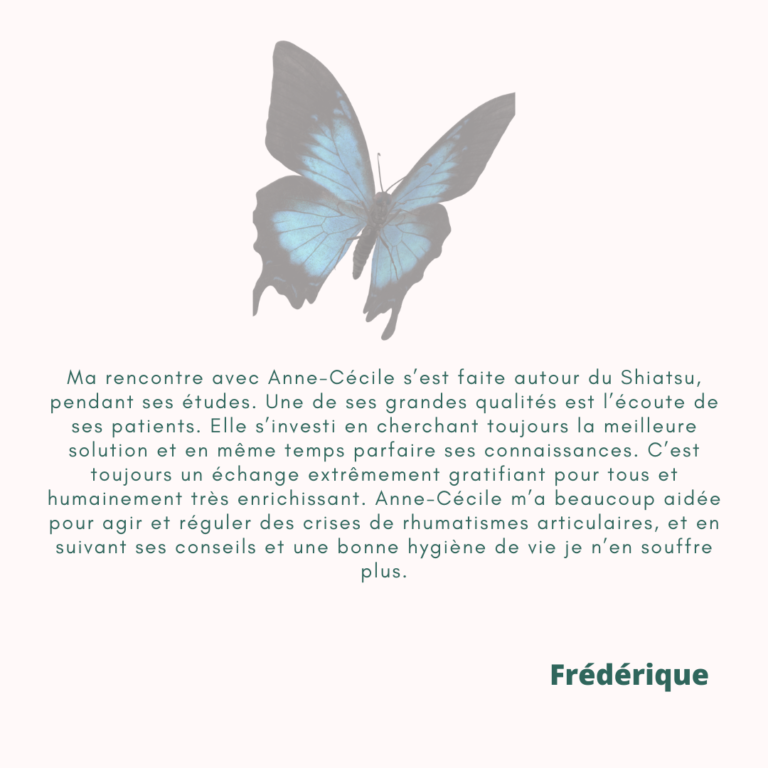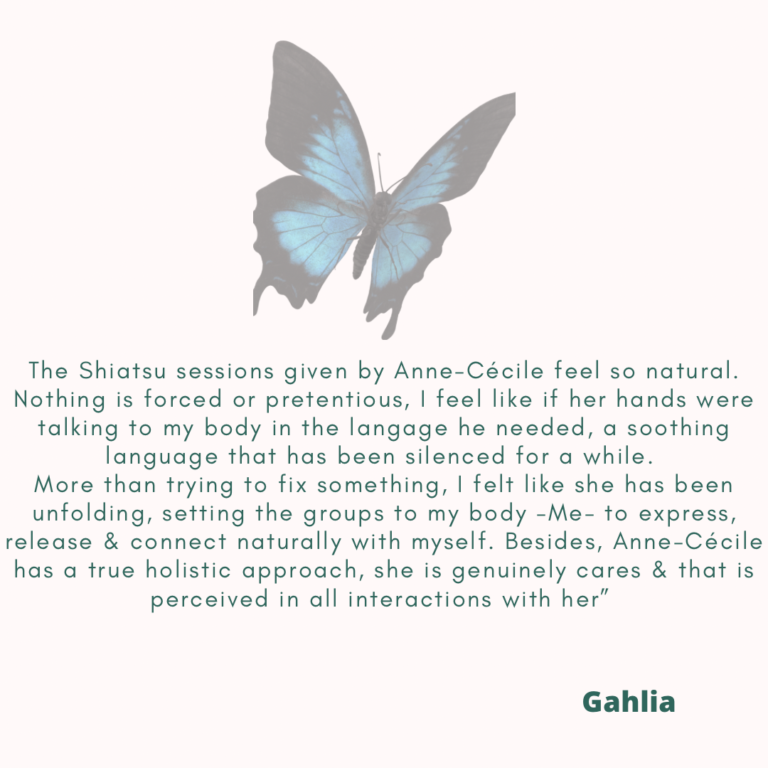Shiatsu is a holistic approach on all 12 main meridians and 8 curious vessels and aims to balance them for optimal health. Our energy body has a great ability to balance itself, but sometimes following life stress or imbalances, the practitioner might intervene to allow the body to recover this ability to self-balance. An imbalance will provoke long-term disease(s) at more or less advanced stages.
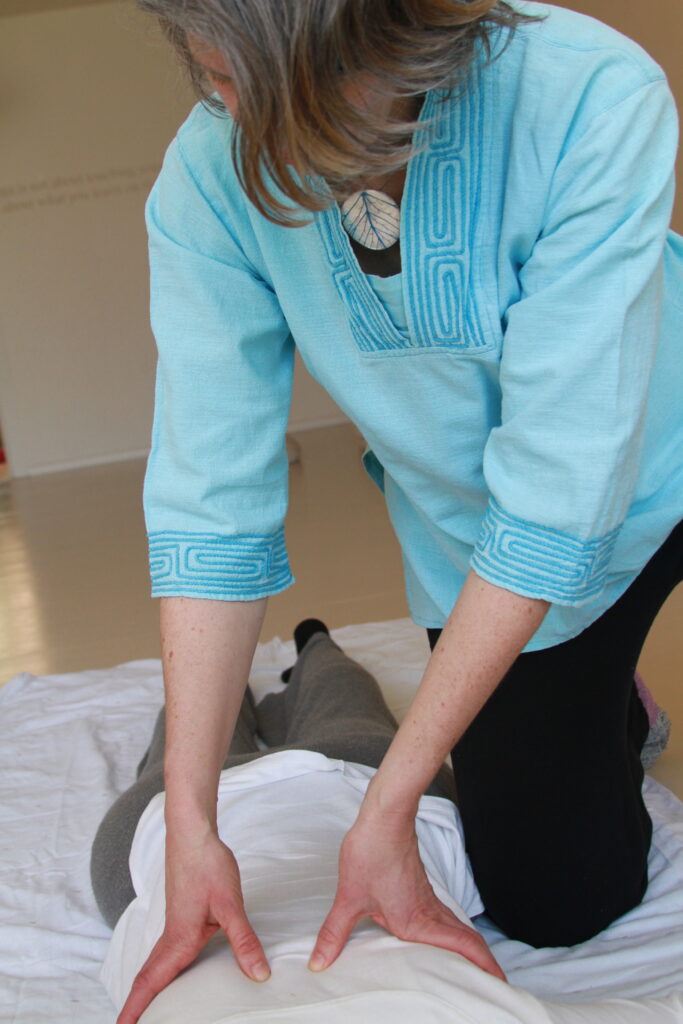
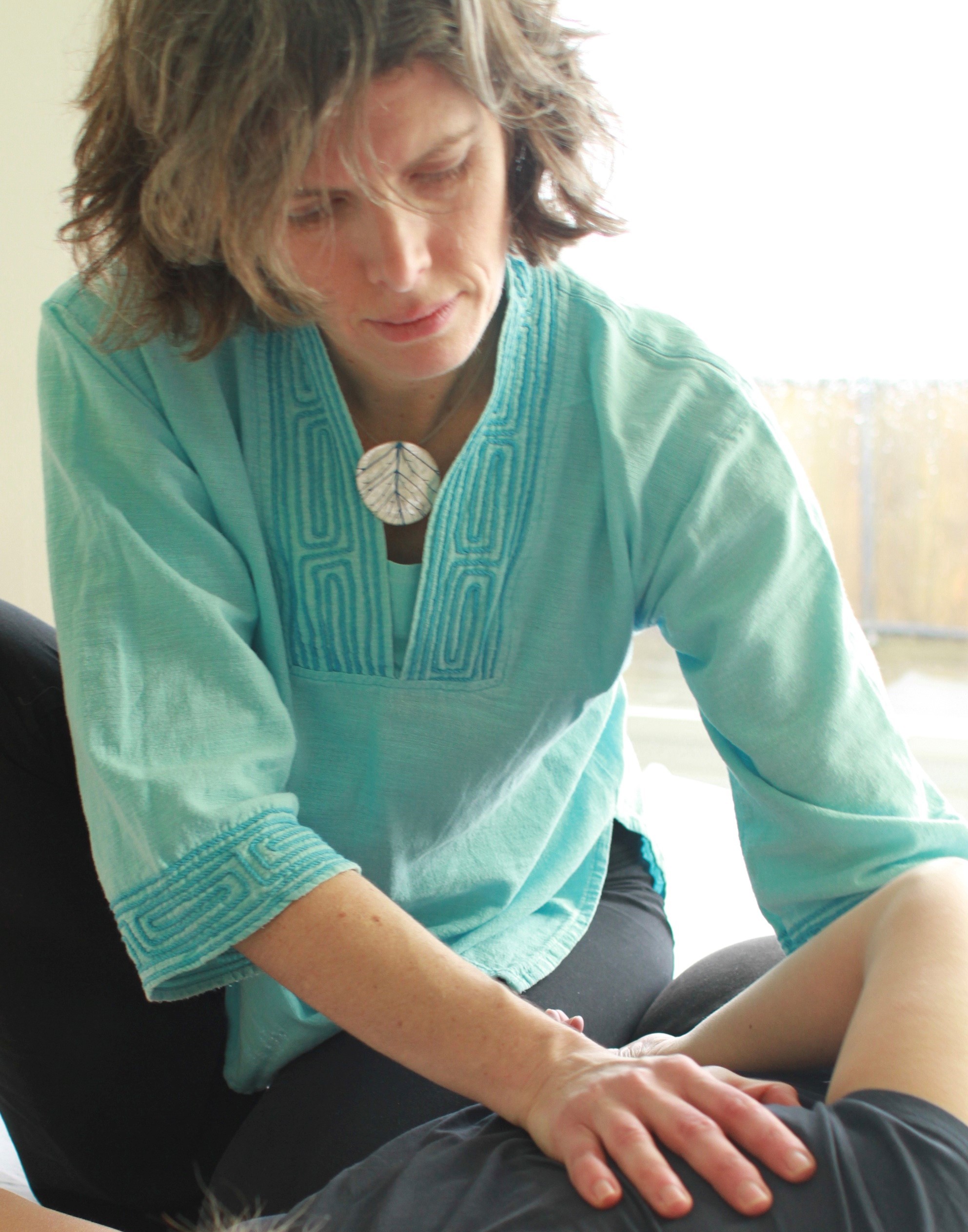
Benefits
Shiatsu brings an overall improvement of the body and mind, while finding a unity. Indeed, our current lifestyles and our environment cut us off from our feelings and our needs, which can create disorders that manifest themselves through our body.
Shiatsu deals with mental problems as well as pain in the body.
Session
A Shiatsu session is approximately one hour (each session being adapted to the receiver, so the duration may vary). The first session always includes a holistic diagnosis (Anamnese) following the four shins (Japanese diagnosis). Shiatsu is given on a futon. The Shiatsu is completed by suggestion regarding breathing practices and Do-In. This support aims to make the patient autonomous and active in his own evolution.
